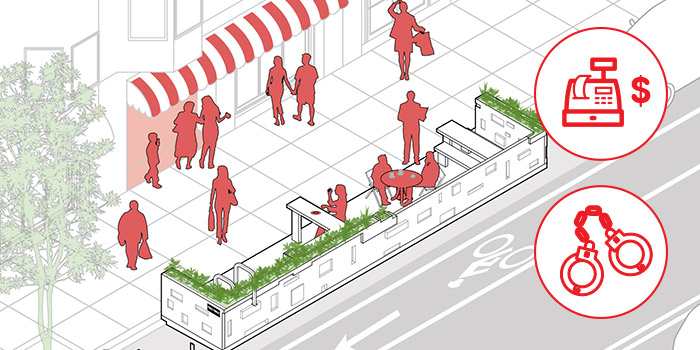
Parklet & Bicycle Lane Impact Analyses
Published: March 2014
by Ben Weinryb Grohsgal and Karina Qian / Harvard Kennedy School of Government
Graduate Scholars Ben Weinryb Grohsgal and Karina Quian from the Harvard Kennedy School tested methods for analyzing how San Francisco’s parklets and bike lanes impact their neighborhoods. The policy analyses by Grohsgal and Qian using sales tax and crime data found that parklets are associated with dropping crime rates and higher sales for certain types of businesses.
“How Do Bike Lanes Affect the Sales of Nearby Businesses?” (Qian, March 2014)
Exerpt — “Some studies, especially recently, have attempted to articulate the effects of bike lanes on businesses using surveys or by comparing retail sales trends on streets before and after the installation of a bike lane. However, none thus far have used robust statistical analysis to evaluate whether the bike lane had any significant effect on business health that can be directly associated with the bike lane, rather than with larger economic forces in the city, variation over time or unmeasured business characteristics. This study combines spatial and statistical analysis to construct a business‐level panel dataset that eliminates these potential confounding effects.”
‘San Francisco: Change on the Streets” (Ben Weinryb Grohsgal, March 2014)
Exerpt — “As the result of the recent push for open and digitalized data, city governments like San Francisco have more data available to them and their citizens than ever before. But in the realm of urban planning, specifically impact evaluation of streetscape interventions, that data is rarely put to best use. Instead, traditional intercept-survey-based methods and in-person people-counting still dominate the area of impact evaluation despite being time-consuming, expensive, and often methodologically statistically poor. This PAE presents an alternative framework for impact evaluation that: (1) Relies on existing datasets; (2) Attempts to distill the impacts of an intervention using sound statistical methodology; and (3) Takes into account citywide and neighborhood-wide trends that may be interacting with the effects of the intervention.”
ADA & Accessibility
The City and County of San Francisco recognizes its obligation under the Americans with Disabilities Act (ADA) and the Language Access Ordinance to provide equal access to all its residents.
Free Language Assistance
免 費語言協助 / Ayuda gratuita con el idioma / Бесплатная помощь переводчиков / Trợ giúp Thông dịch Miễn phí / Assistance linguistique gratuite / 無料の言語支援 / 무료 언어 지 원 / Libreng tulong para sa wikang Tagalog / คว"ม ช่วยเหลือท"งภ"ษ"โดยไม่ เส'ยค่าใช้จ่าย
Dial 3-1-1 (within SF only) or (415) 701-2311



